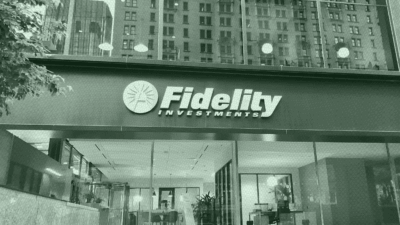Fidelity Wins First SEC Approval to Expand Semi-transparent ETF Holdings
Fidelity can include securities beyond US stocks in semi-transparent ETFs, per an SEC order, though it must disclose the added holdings daily.

Sign up for market insights, wealth management practice essentials and industry updates.
Fidelity Investments just got a big leg up on competitors in the semi-transparent ETF business.
The fund giant got the greenlight from the SEC on Monday to add non-US securities, fixed income, and derivatives to semi-transparent products — which typically disclose holdings quarterly, instead of daily like traditional exchange-traded funds. Previously semi-transparent funds were largely restricted to holding domestic equity and related exchange-traded futures. Now, Fidelity’s ETFs can invest beyond US securities, though the expanded investments would have to be disclosed to the public daily. A person with knowledge of the matter confirmed that Fidelity is the only semi-transparent ETF issuer to gain SEC approval for the specific asset classes.
In the relatively small world of non-transparent and semi-transparent ETFs, that may be a significant change. “It means that Fidelity can and likely will invest some of the assets in its semi-transparent actively managed ETFs in non-US equities,” said Todd Rosenbluth, head of research at TMX VettaFi. “Fidelity has had to invest solely in the US, historically, for these funds but now can hold shares in some of the best companies around the world.”
Show Me the Money
The non-transparent ETF structure was first approved in 2019 and has been an attractive model for active mutual fund managers who want to add their strategies in ETF form. The structure generally lets them avoid disclosing an ETF’s holdings daily, and instead shows investors a “proxy basket” that gives some idea of the asset allocation. The managers then publish their portfolios quarterly, like mutual funds. The practice shields ETF providers from would-be copycats.
The size of the semi-transparent and non-transparent ETF business in the US is growing, according to Morningstar Direct data:
- Funds hold $14 billion in assets as of March 31, up from just $6 billion a year earlier.
- There are now 41 total ETFs, a figure unchanged over a year.
- There were $8 billion in net new sales over a year.
Behind the Scenes. Despite the interest in non-transparent and semi-transparent ETFs, the number of products on the market is still limited. Some companies have opted to go transparent with their new active ETFs, and in some cases, they have switched from the non-transparent model to the normal, fully transparent route.
For example, Gabelli last year switched one of its active ETFs to the fully transparent model, a test case that will help it decide whether to do the same for a handful of other funds.











